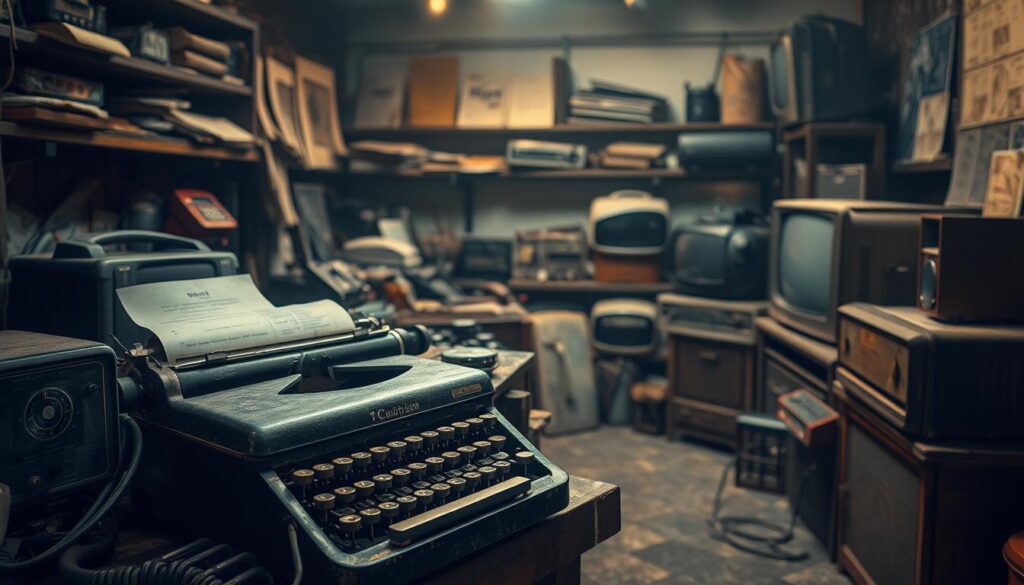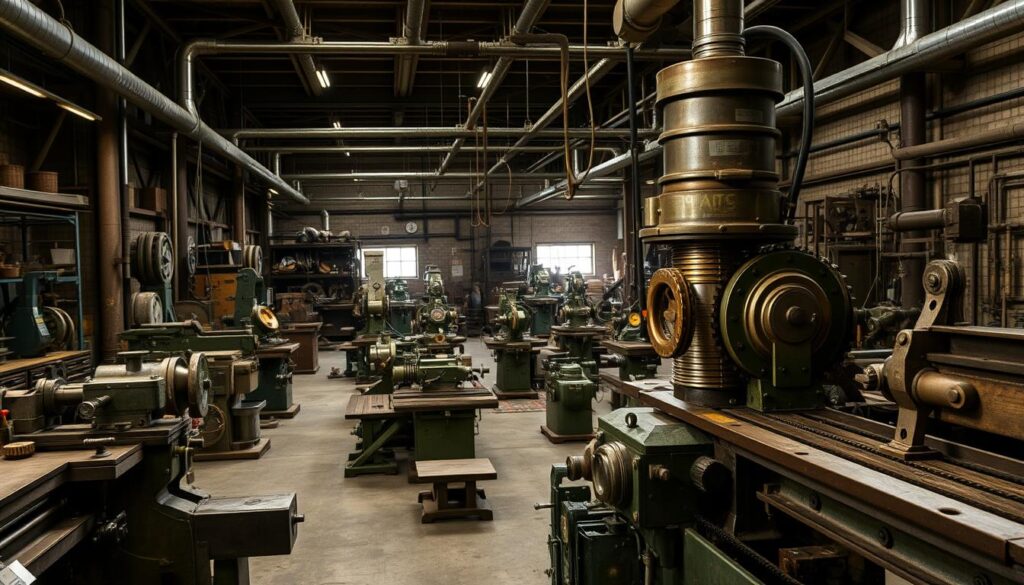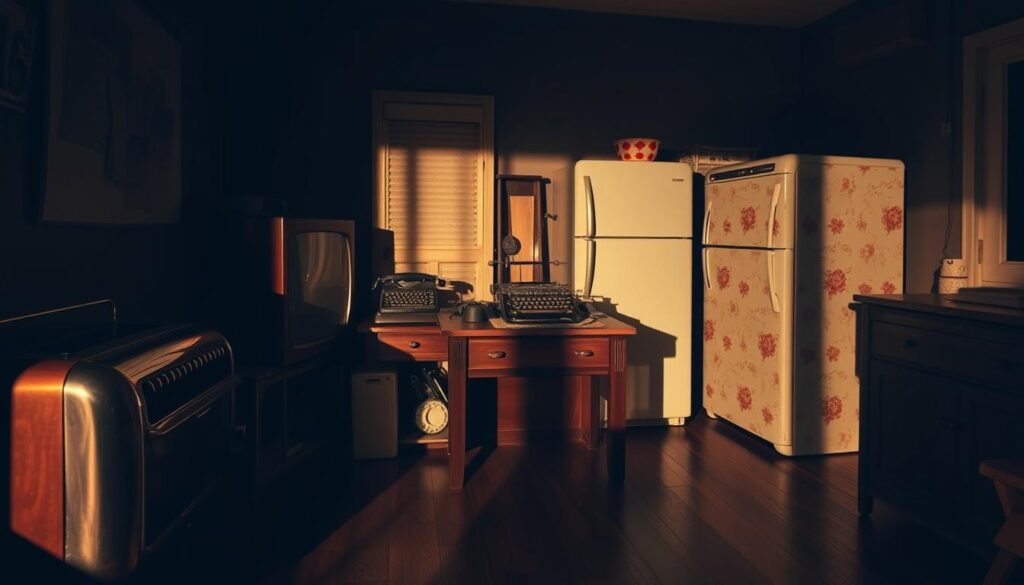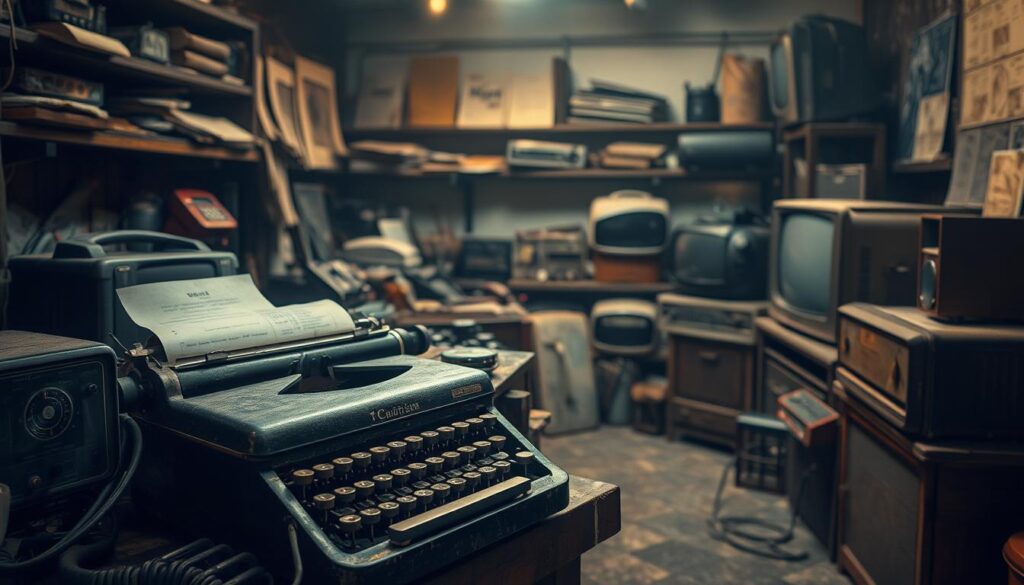Vanished Wonders – The history of innovation is filled with examples of old technology that led to today’s advancements. Machines once seen as revolutionary are now gone, replaced by newer ones. Their story shows how fast innovation moves and how old tech affects our lives.
Innovation drives technological progress, with each new find building on the last. Looking at the history of mechanical innovation, we see the importance of these old Vanished Wonders. They helped create new machines, making the old ones obsolete. This cycle of progress has brought us to today.

Studying old machines and technology gives us a peek into the past. It helps us understand the complex journey that shaped our world. From the start of industrialization to now, the tale of vanished wonders is one of endless innovation and growth.
Key Takeaways Vanished Wonders
- The history of innovation is marked by the rapid pace of technological progress
- Obsolete technology has played a significant role in shaping modern advancements
- Historical machines have contributed significantly to the development of new technologies
- The cycle of innovation has led to the creation of new machines, rendering older models obsolete
- The study of historical machines provides a unique glimpse into the past, allowing us to learn from the successes and failures of our predecessors
- Innovation has always been a driving force behind technological progress
The Evolution of Mechanical Innovation Through Time
Looking into the history of mechanical innovation shows us how technological progress has pushed human growth. The Industrial Revolution was a big leap forward in creating new machines and devices. But, this progress also led to the loss of lost inventions and forgotten devices that were once groundbreaking, Vanished Wonders.
Some examples of these lost technologies include:
- Steam-powered engines, which paved the way for modern transportation
- Telegraph machines, which enabled long-distance communication
- Early computing devices, such as Charles Babbage’s Analytical Engine
These innovations, though eventually replaced, were key in shaping our history. The cycle of technological progress keeps going, with each new find building on the last. This leads to the creation of new, groundbreaking technologies, Vanished Wonders.
By studying the evolution of mechanical innovation, we learn about the complex relationship between technological progress, lost inventions, and forgotten devices. This understanding helps us see how new technologies develop and why we should keep our mechanical heritage alive, Vanished Wonders.
Fascinating Machines That No Longer Exist in Modern Society
Historical machines show our past creativity and innovation. Many are now outdated, replaced by newer tech. Yet, they’re key to understanding our history and innovation’s impact, Vanished Wonders.
Examples include steam engines, early computers, and mechanical calculators. These were once top innovations but are now outdated. Studying them helps us see how innovation has evolved and shaped our world, Vanished Wonders.
Here are a few examples of historical machines that are now obsolete:
- Steam-powered locomotives, which were once the primary mode of transportation
- Mechanical telegraphs, which were used for long-distance communication
- Early computers, such as the ENIAC, which was the first general-purpose electronic computer
These machines may seem old-fashioned now. But they were vital in shaping our modern world. By exploring these machines and the innovation behind them, we appreciate today’s tech more.
The Lost World of Communication Devices
Communication technology has changed a lot over the years. Many lost inventions and forgotten devices have played a big role in shaping the industry. The history of communication devices is full of innovation and things that are no longer used. Devices like telegraph machines and early telephone switchboards are examples of this, Vanished Wonders.
These lost inventions have led to the modern communication devices we use today. For example, the telegraph machine was once a big deal but is now outdated. Early telephone switchboards have also been replaced by automated systems. These changes have made communication faster and more convenient, Vanished Wonders.
Some notable examples of lost communication devices include:
- Telegraph machines, which used Morse code to transmit messages
- Early telephone switchboards, which connected callers to their desired recipients
- Telegram distribution networks, which allowed for the widespread dissemination of messages
In conclusion, the lost world of communication devices shows our endless drive for innovation. By looking into the history of these lost inventions, we can understand how communication technology has evolved. We can also see how these devices helped shape the industry into what it is today.
Manufacturing Marvels of Yesterday
Historical machines have greatly influenced the manufacturing industry. These machines, now seen as outdated, were once leaders in innovation. They helped shape manufacturing processes and techniques, driving the industry’s growth, Vanished Wonders.
Before, manufacturing mainly used manual labor and simple tools. But, new machines and technologies changed everything. These machines made manufacturing more efficient and productive. Manufacturing became smoother, and product quality improved, Vanished Wonders.
The spinning jenny and power loom are examples of machines that helped the textile industry grow. Now, these machines are seen as outdated. Yet, the knowledge from their development has led to new technologies, advancing manufacturing further, Vanished Wonders.
Today, we can learn a lot from the history of manufacturing and its machines. By studying these machines, we understand how manufacturing has changed, Vanished Wonders.

Looking at old machines and technology can also guide new manufacturing advancements. By learning from past successes and failures, we can make manufacturing better. This knowledge helps many industries, from textiles to cars, innovate and grow, Vanished Wonders.
The history of manufacturing and its machines is both rich and interesting. By exploring this history, we can better understand how manufacturing has evolved. This knowledge helps us create new technologies and processes, driving innovation and growth in the industry, Vanished Wonders.
Transportation Technologies Time Forgot
Looking into the history of transportation, we find many transportation technology that are no longer used. These lost inventions and forgotten devices were key in creating today’s transportation systems. From steam cars to early airplanes, their development is truly impressive.
Museums and historical records keep the memory of these early technologies alive. They show us the hard work of the inventors who came before us. Their efforts have led to the transportation systems we use today.
- Steam-powered locomotives that revolutionized land transportation
- Early flying machines that paved the way for modern air travel
- Forgotten railway technologies that have been replaced by modern systems
Though these lost inventions may seem old now, they were crucial in the growth of transportation technology. By learning about these early technologies, we can better understand how transportation has evolved. We also appreciate the innovations that have changed our world.
Household Appliances That Disappeared
Many household appliances that were once common are now obsolete technology. They’ve been replaced by newer, more efficient devices. These historical machines greatly influenced our homes, but their impact is often forgotten.
Examples of household appliances that have vanished include early refrigerators, vintage washing machines, and old vacuum cleaners. These items were groundbreaking in their time. Yet, they’ve been outdone by today’s advanced technologies.
Here are a few examples of obsolete technology in household appliances:
- Iceboxes, which were used for refrigeration before the invention of electric refrigerators
- Washing boards, which were used for hand-washing clothes before the invention of washing machines
- Manual vacuum cleaners, which were used before the invention of electric vacuum cleaners

These historical machines may seem old-fashioned today. But they laid the groundwork for the modern household appliances we enjoy. By learning about these devices, we can see how far technology and innovation have come.
Office Equipment of the Past
Exploring the history of office technology is fascinating. We see lost inventions and forgotten devices that were once key to our work lives. These devices, from manual typewriters to calculators, greatly improved office efficiency and productivity.
Office technology has changed how we work. New technologies made old devices obsolete. For example, dictation machines and carbon paper were once essential but are now forgotten. Their history shows human ingenuity and the drive for innovation.
Here are some lost inventions in office equipment:
- Manual typewriters: Once a must-have, now replaced by computers and digital keyboards.
- Adding machines: Used for calculations, now electronic calculators and software have taken over.
- Dictation devices: Still used in some ways, but digital voice recorders and transcription software have become the norm.
As office technology advances, it’s important to remember the devices that came before. By looking at the history of lost inventions, we appreciate the evolution of office technology. This evolution has greatly impacted our work lives.
| Device | Description | Year Introduced |
|---|---|---|
| Manual Typewriter | A mechanical device for typing documents | 1868 |
| Adding Machine | A mechanical device for calculations | 1887 |
| Dictation Device | A device for recording voice messages | 1907 |
Conclusion: Learning from Our Mechanical Heritage
Looking back at the history of machines that are now forgotten, we see the cycle of technological progress. Each new invention, from the telegraph to the manual typewriter, has shaped our world. By learning from these historical machines, we can inspire new innovations.
The tale of mechanical marvels that have faded away shows how fast technology changes. What was once new can soon become old, making room for new discoveries. These forgotten machines can spark new ideas and bring back our sense of awe. By exploring the past, we can find the beginnings of future advancements, driving us to keep discovering.
FAQ
What is the purpose of this article?
This article explores the history of old machines and technologies. It looks at the “vanished wonders” of the past. It aims to show how mechanical innovation has evolved over time.
What types of machines and technologies will be covered in this article?
We’ll look at many machines and technologies, like steam cars and early flying machines. We’ll also cover old household appliances and office equipment. These innovations once changed their industries but are now gone.
Why is it important to learn about our mechanical heritage?
Knowing about old machines and technologies is key. It shows us how technology changes over time. By learning from the past, we can inspire new inventions. It also helps us appreciate the creativity of past inventors.
What kind of data and information will be used in this article?
We’ll use historical records, museum collections, and studies on technology. Our goal is to give a detailed and accurate look at these topics.
How will the article be structured?
The article will have several sections, each focusing on a different topic. We’ll cover mechanical innovation, old machines, communication devices, and more. Each section will have a clear heading.
Source link
- https://www.cntraveler.com/story/tourists-are-angry-that-maltas-azure-window-doesnt-exist-anymore
- https://www.cntraveler.com/story/did-the-8th-wonder-of-the-world-survive
- https://www.nationalgeographic.com/premium/article/natural-wonders-that-disappeared
- https://listverse.com/2021/12/17/ten-beautiful-natural-wonders-that-no-longer-exist/
- https://www.reddit.com/r/history/comments/3n8p2y/what_is_the_greatest_lost_natural_wonder/
